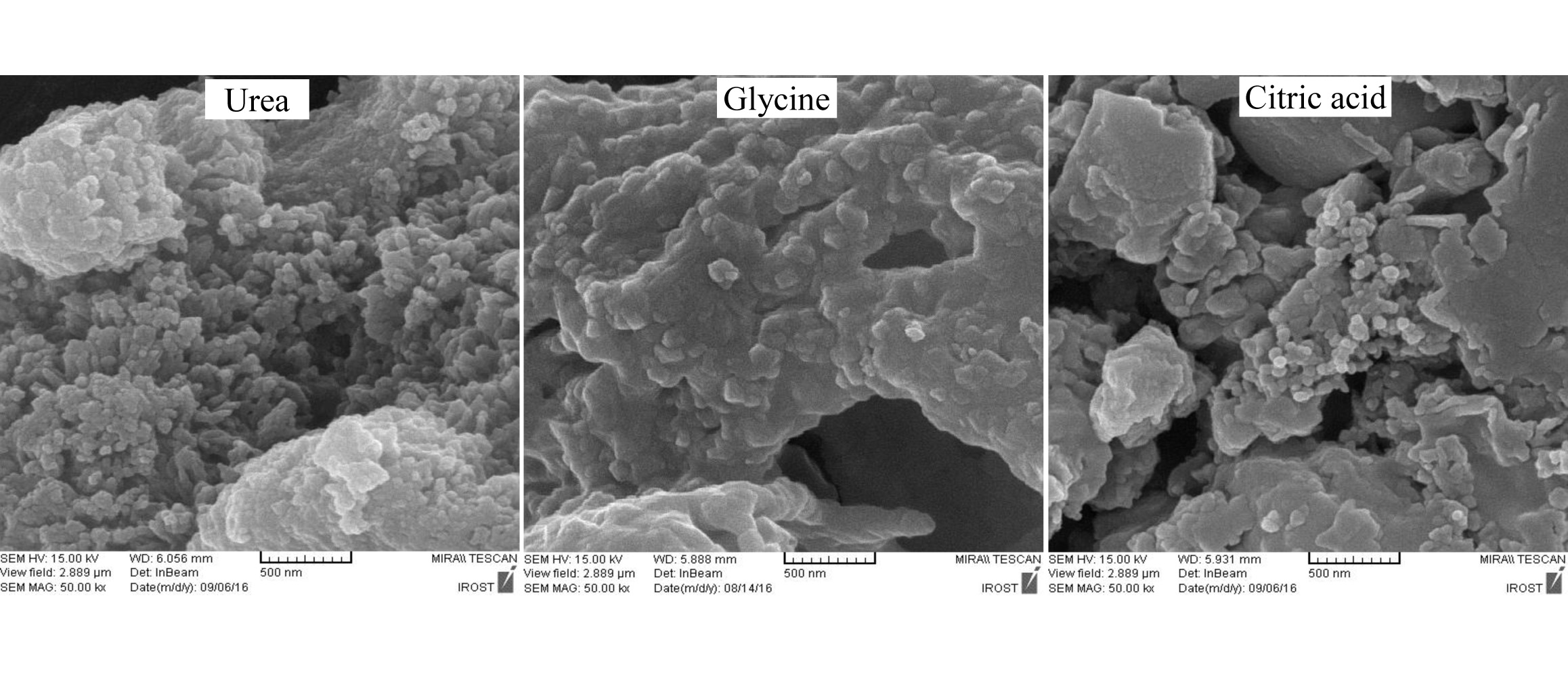Sun, Jan 19, 2025
[Archive]
Volume 15, Issue 2 (June 2018)
IJMSE 2018, 15(2): 67-75 |
Back to browse issues page
Download citation:
BibTeX | RIS | EndNote | Medlars | ProCite | Reference Manager | RefWorks
Send citation to:



BibTeX | RIS | EndNote | Medlars | ProCite | Reference Manager | RefWorks
Send citation to:
Pourgolmohammad B, Masoudpanah S, Aboutalebi M. Cation Distribution Tuning of Solution Combusted CoFe2O4 Powders. IJMSE 2018; 15 (2) :67-75
URL: http://ijmse.iust.ac.ir/article-1-1015-en.html
URL: http://ijmse.iust.ac.ir/article-1-1015-en.html
Abstract: (16693 Views)
In this work, the different fuels (citric acid, glycine and urea) were used for solution combustion synthesis of CoFe2O4 powders. X-ray diffraction, Raman spectroscopy, electron microscopy and vibrating sample magnetometry techniques were employed for characterization of phase evolution, cation distribution, microstructure and magnetic properties of the as-combusted CoFe2O4 powders. Single phase CoFe2O4 powders with partially inverse structure in which the Co2+ cations are distributed in both tetrahedral and octahedral sites were synthesized by the citric acid, glycine and urea fuels. The as-combusted CoFe2O4 powders by the citric acid fuel exhibited the highest inversion coefficient. The crystallite size of the as-combusted CoFe2O4 powders synthesized by urea fuel was 15 nm, increased to 41 and 52 nm for the glycine and citric acid fuels, respectively. Furthermore, the solution combusted CoFe2O4 powders showed ferromagnetic behavior with saturation magnetization of 61.9, 63.6 and 41.6 emu/g for the citric acid, glycine and urea fuels, respectively. The high crystallinity and particle size of the as-combusted CoFe2O4 powders using glycine fuel led to the highest magnetization and the moderate coercivity.
Type of Study: Research Paper |
Send email to the article author
| Rights and permissions | |
 |
This work is licensed under a Creative Commons Attribution-NonCommercial 4.0 International License. |







